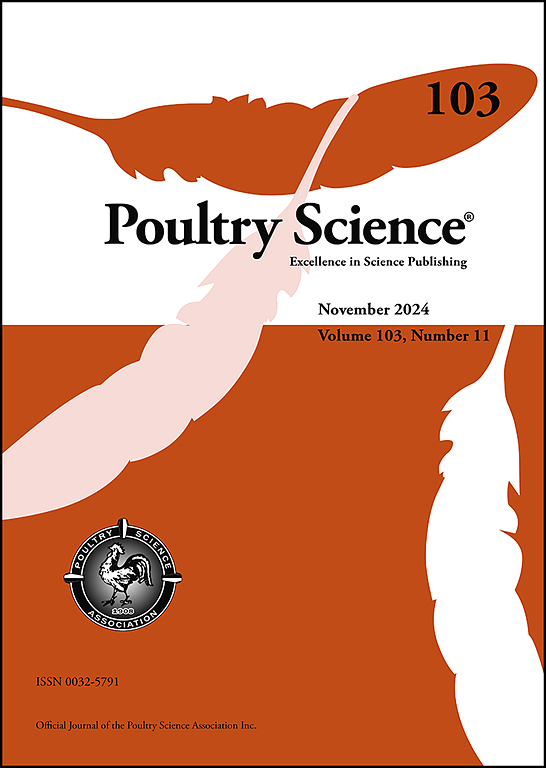The landscape of RNA 5-methylcytosine modification during chicken embryonic myogenesis
IF 3.8
1区 农林科学
Q1 AGRICULTURE, DAIRY & ANIMAL SCIENCE
引用次数: 0
Abstract
Skeletal muscle is a vital protein source for human diets, making its development a significant focus in poultry research. This study examines the effects of RNA 5-methylcytosine (m5C) modifications on chicken skeletal muscle development at two critical embryonic stages: before myoblast differentiation (E10) and after differentiation (E19). By employing MeRIP-seq, we analyzed the dynamic distribution of m5C modifications within the leg muscle transcriptome, uncovering notable differences in modification states between these two stages. Our results indicate that m5C modifications are widespread in chicken skeletal muscle transcriptome and present a unique distribution pattern. Unlike N6-methyladenosine modifications, which typically show a negative correlation with RNA expression, m5C modifications exhibited a weak positive correlation in our findings. Additionally, we identified multiple m5C peaks on important epigenetic regulators, including DNMT3A, DNMT3B, DNMT1, TET3, and METTL3. This observation suggests that RNA m5C may interact with these genes to jointly influence chicken skeletal muscle development. Furthermore, we identified key genes linked to m5C peaks that are enriched in pathways associated with cell cycle regulation, muscle growth, and lipid metabolism. This study provides valuable insights into the role of m5C modifications in the development of chicken skeletal muscle and highlights their potential for coordinating myogenesis and lipid metabolic processes.
求助全文
约1分钟内获得全文
求助全文
来源期刊

Poultry Science
农林科学-奶制品与动物科学
CiteScore
7.60
自引率
15.90%
发文量
0
审稿时长
94 days
期刊介绍:
First self-published in 1921, Poultry Science is an internationally renowned monthly journal, known as the authoritative source for a broad range of poultry information and high-caliber research. The journal plays a pivotal role in the dissemination of preeminent poultry-related knowledge across all disciplines. As of January 2020, Poultry Science will become an Open Access journal with no subscription charges, meaning authors who publish here can make their research immediately, permanently, and freely accessible worldwide while retaining copyright to their work. Papers submitted for publication after October 1, 2019 will be published as Open Access papers.
An international journal, Poultry Science publishes original papers, research notes, symposium papers, and reviews of basic science as applied to poultry. This authoritative source of poultry information is consistently ranked by ISI Impact Factor as one of the top 10 agriculture, dairy and animal science journals to deliver high-caliber research. Currently it is the highest-ranked (by Impact Factor and Eigenfactor) journal dedicated to publishing poultry research. Subject areas include breeding, genetics, education, production, management, environment, health, behavior, welfare, immunology, molecular biology, metabolism, nutrition, physiology, reproduction, processing, and products.
 求助内容:
求助内容: 应助结果提醒方式:
应助结果提醒方式:


